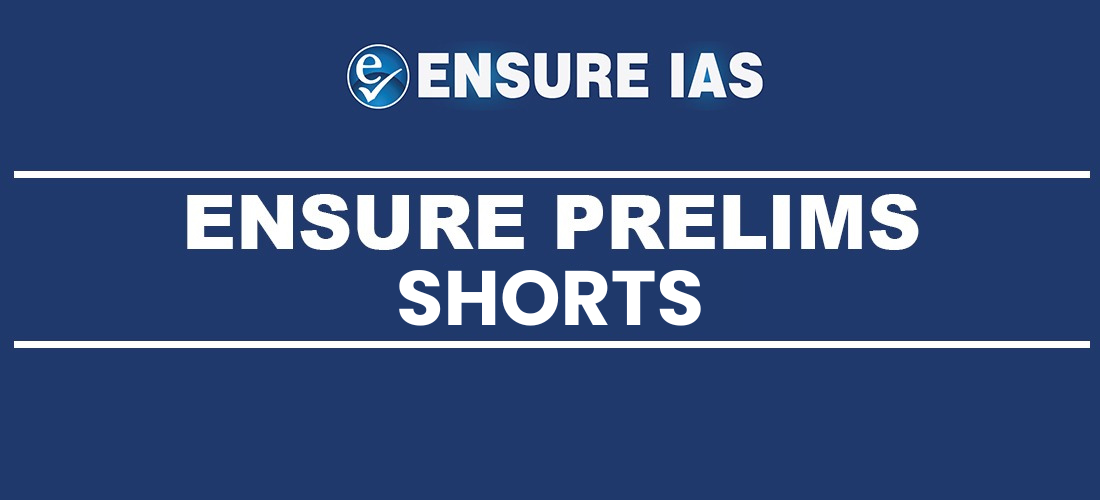- Courses
- GS Full Course 1 Year
- GS Full Course 2 Year
- GS Full Course 3 Year
- GS Full Course Till Selection
- MEP (Mains Enrichment Programme) Data, Facts
- Essay Target – 150+ Marks
- Online Program
- GS Recorded Course
- NCERT- First Ladder
- Polity
- Geography
- Economy
- Ancient, Medieval and Art & Culture AMAC
- Modern India, Post Independence & World History
- Environment
- Governance
- Science & Technology
- International Relations and Internal Security
- Disaster Management
- Ethics
- Current Affairs
- Indian Society and Social Issue
- CSAT
- 5 LAYERED ARJUNA Mentorship
- Public Administration Optional
- ABOUT US
- OUR TOPPERS
- TEST SERIES
- FREE STUDY MATERIAL
- VIDEOS
- CONTACT US
Ensure Prelims Shorts November 16, 2023
Ensure Prelims Shorts November 16, 2023
16-11-2023

SHREYAS Scheme for OBC & Others
- About: The schemes aim to provide financial assistance to OBC & EBC students for quality higher education and interest subsidies on educational loans for overseas studies.
- Nodal Ministry: Ministry of Social Justice and Empowerment.
-
Key Components:
-
National Fellowship for OBC Students:
- About: The initiative seeks to offer financial aid to OBC students pursuing higher education, specifically M.Phil and Ph.D. degrees, at recognized universities, research, and scientific institutions.
- The scheme provides 1000 Junior Research Fellowships annually for advanced studies and research, awarded to students who pass specific tests like UGC-NET or UGC-CSIR NET-JRF Joint Test.
-
Key Features:
- The National Backward Classes Finance and Development Corporation, a government of India undertaking overseen by the Ministry of Social Justice & Empowerment, is the conduit for financial support.
- Together with contingencies, the fellowship fees are fixed at Rs. 31,000 for JRF and Rs. 35,000 for SRF per month.
- seats earmarked for students with impairments and extra seats beyond government quotas that are set aside.
- The nodal agency for carrying out the plan is the UGC.
-
Dr. Ambedkar Scheme of Interest Subsidy on Educational Loans for Overseas Studies for OBCs & EBCs:
- The aim is to give interest subsidies on student loans to OBCs and EBCs who are enrolled in Masters, M.Phil, and Ph.D. programs approved overseas.
- The program, which is run by Canara Bank, is applicable to post-secondary education overseas and is connected to the current Educational Loan Programs.
- For OBC applicants, eligibility requirements include income limitations based on the Creamy Layer criteria; for EBC candidates, the income cap is Rs. 5.00 lakh annually.
- Women candidates are eligible to receive 50% of the funding.
- During the moratorium time, the government will pay 100% of the interest; after that, the student will be responsible for repaying the loan.
Madiga Sub-Categorization
- In a recent announcement in Hyderabad, Telangana, the Indian Prime Minister declared his intention to establish a committee to subclassify the Madiga community under the Scheduled Castes (SC).
- According to the 2011 census, the Madiga group makes up about half of Telangana's SC population.
- The Madiga group has been pushing for the subclassification of the SC category since 1994, citing the necessity of distributing reservation benefits fairly.
- Madigas claim that the Mala community (a Dalit population in the states of Andhra Pradesh and Telangana) has benefited most from the SC category reservations, leaving the Madigas feeling excluded.
- The goal of sub-categorization is to distribute reservation benefits across all SC sub-castes in an equal manner.
- Madigas, historically known for tannery, leatherwork, and small handicrafts, now predominantly employs agricultural laborers.
Enhancing Antifungal Treatment
- Amphotericin B (AmB), an antifungal drug, has been successfully modified, according to a recent study published in Nature. This alteration has decreased AmB's toxicity in both mice and human kidney cells.
- AmB has been a crucial defense against dangerous fungal infections for many years.
- It works by aggregating and binding to the chemical ergosterol, which is present in the cells of bacteria and fungi.
- AmB is well known for its significant toxicity in humans, especially in renal cells, despite its effectiveness.
- By altering particular regions of AmB's molecule that bind sterols, researchers hope to increase the protein's biological activity and create a version known as AM-2-19.
- AM-2-19, demonstrated reduced toxicity by selectively binding to and extracting fungal ergosterol, but not mammalian cholesterol, in human renal cells and mice while maintaining high efficacy as an antifungal treatment. It is also comparatively resilient to antimicrobial resistance.
P. salinarum: Unveiling Adaptation in Extreme Environments
- The mysteries surrounding P. salinarum, a microscopic green alga that can survive in extreme saline-alkaline conditions, have been explored in recent research.
- Examining the molecular mechanics of the creature, scientists discovered that, in contrast to most photosynthetic life in hyperosmotic environments, it had special adaptations that enhance photosynthesis and ATP (adenosine triphosphate) generation.
- When an organism or cell's internal environment has less solutes than its external environment does, this is referred to as a hyperosmotic state.
- Beyond its hardiness, this microalga shows promise for biomass production and carbon capture, opening the door for sustainable biotechnological breakthroughs.
Coconut Development Board
- The Coconut Development Board (CDB) has launched the "Hello Naariyal," Friends of Coconut Tree call centre, focusing on coconut harvesting and plant management practices.
- About CDB:
- CDB is a statutory body established under the Coconut Development Board Act, of 1979.
- Nodal Ministry: Ministry of Agriculture and Farmers Welfare.
- Headquarters: Kochi in Kerala.
- Mandate: integrated development of coconut cultivation and industry in the country with a focus on productivity increase and product diversification.
Kill Switch for Cancer Cells
- It has been reported that scientists have found a "kill switch" that causes cancer cells to die.
- An important epitope on the CD95 receptor that can trigger the bigger protein and kill cells has been found.
- The signal that triggers cancer cells to self-destruct is sent by CD95 receptors, commonly known as Fas.
- The activation of these CD95 receptors may be enhanced by upcoming cancer medications, providing a new tool in the fight against cancerous tumors.
- Chemotherapy, radiation, and surgery have all been used to treat cancer historically.
National Institute of Disaster Management (NIDM)
- Recently, NIDM was acknowledged on a global scale as a "centre of excellence" for the mitigation of landslide disasters for the years 2023–2026.
- The National Disaster Management Act of 2005 established NIDM as a statutory organization (under the Ministry of Home Affairs).
- In the area of disaster management, it is responsible for policy advocacy, research, documentation, training, capacity building, and human resource development.
- The President of NIDM is the union home minister.
Innovation Handshake
- 'Innovation Handshake' was introduced by the US and India to strengthen bilateral tech connections.
- An agreement on "Enhancing Innovation Ecosystems through an Innovation Handshake" was signed by both parties.
- The idea of the Innovation Handshake was created as part of the US-India Commercial Dialogue to improve collaboration in Critical and Emerging Technologies (CET).
-
Objectives:
- Connect the dynamic startup ecosystems.
- Address regulatory hurdles to cooperation, Share information and best practices for startup fundraising.
- Promote innovation in CET.
World Bank's Worldwide Governance Indicators
- Recently, the Chief Economic Adviser expressed concerns about the use of the World Bank's WGI in credit rating assessments, particularly for emerging economies.
- WGI is intended to assist analysts and academics in identifying general trends in how people view governance over time and across national borders.
- WGI provides a ranking of 215 countries and territories based on six dimensions of governance:
- Voice and Accountability.
- Political Stability and Absence of Violence.
- Government Effectiveness.
- Regulatory Quality
- Rule of Law.
- Control of Corruption.
Tadoba Andheri Tiger Reserve
-
About Tiger Reserve (Chandrapur- Maharashtra):
- Location: The reserve falls in the Central Plateau province of the Deccan peninsula.
- Vegetation: tropical dry deciduous forests and typical Central Indian faunal assemblage.
- Flora: Teak, Ain, Bamboo, Bija, Dhaoda, Haldu, Salai, Semal and Tendu. Bamboo is spread over 40% of the habitat.
- Fauna: Tiger, leopard, sloth bear, wild dog, gaur, chital and sambar.
- Other facts: its landscape connects the tiger population of Maharashtra with that of Indravati in Chhattisgarh
Enzyme Replacement Therapy (ERT)
- The first enzyme replacement medication in history received approval from the U.S. Food and Drug Administration (USFDA) recently.
- The first recombinant (genetically modified) protein product approved for on-demand ERT was Adzynma.
- Congenital thrombotic thrombocytopenic purpura (cTTP), a rare blood clotting condition, will be treated with it.
- ERT refers to the treatment where replacement enzymes are given to patients who suffer from conditions resulting from enzyme deficiencies or malfunction
- Through fluids, the patient receives the replacement enzyme straight into their bloodstream, which is taken from human, animal, or plant cells.
Acharya Vinoba Bhave (1895-1982)
- He was remembered on his death anniversary.
- He was a scholar-saint and considered one of the great social reformers and spiritual heir of Mahatma Gandhi.
-
Contributions:
- First to lead the Individual satyagraha of Gandhiji in 1940.
- Led the Bhoodan Movement (the main initiative of the Sarvodaya movement in the 1950s.).
-
Achievements:
- The first recipient of the Ramon Magsaysay Award for Community Leadership in 1958.
- Conferred with Bharat Ratna posthumously in 1983.
- Ethical Values: Non-partisanship, compassion, Objectivity.



